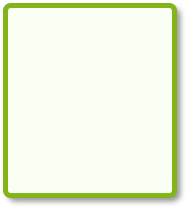



 NEXT
NEXT
 BACK
BACK
 Forum
Forum


Philosophical musings on Quanta & Qualia; Materialism & Spiritualism; Science & Religion; Pragmatism & Idealism, etc.




A philosophical worldview or belief system grounded on the 20th century discovery that Information, rather than Matter, is the fundamental substance of everything in the universe. It is intended to be the 21st century successor to the ancient worldviews of Materialism and Idealism. An Update from Bronze Age to Information Age. It's also a Theory – of – Everything that covers, not just matter & energy, but also Life & Mind & Love.


Post 132. March 10, 2024
How Does the Brain Create Mind?
The Mind is an imaginary model of brain functions
In his book, Science Ideated, computer scientist Bernardo Kastrup argues with philosophers about the nature of the Conscious Mind. Specifically, if it is a real feature of animated matter, or a mistaken illusion of brain processes. Michael Graziano says “consciousness doesn’t happen. It’s a mistaken construction”. But Kastrup answers with “even the illusion presupposes consciousness”. Keith Frankish is the one who explicitly dismissed Consciousness as an “illusion”. Kastrup interpreted that to mean : “it is our ability to introspect, by meta-
Kastrup responds to the denial of a metaphysical problem with : “what he must deny is phenomenality², felt experience, qualia³, ‘what-
Apparently, Graziano & Frankish ─ in denying the reality of Conscious awareness ─ are arguing against the ancient concept of a spiritual Soul, as the knowing & willing part of a person. They scoff at the ideal Soul or Self that is supposed to do the experiencing of reality. Indeed, both are imaginary concepts reifying⁷ the perceptive function, as-
Blog Post 132 continued . . . click Next
continued . . . click Next 
Brain-Mind Interface


1. Metacognition :
Introspection into the conscious mind. It’s a form of recursion or reflection, where the mind looks back into its own thoughts & feelings.
2. Phenomenality :
Appearances. How things in the world appear to the experiencing consciousness. Kant noted that this is an imaginary representation, not what the thing is in essence. It’s Ideal, not Real.
3. Qualia :
Philosophers often use the term 'qualia' to refer to the introspectively accessible, phenomenal aspects of our mental lives. How incoming sensory experience is portrayed in the mind.
4. What it is like :
The feeling or sensation of experiencing the world. A metaphysical characteristic of perception. “Like” implies a comparison of inner & outer worlds. Likeness is a refer-
5. Interface Theory :
Our perceptions of space-
6. Noumenon :
In philosophy, a noumenon is knowledge posited as an object that exists independently of human sense. An ideal entity.
7. To Reify :
An attempt to make a mental abstraction appear to be a real thing. To treat the idea or image of a thing as if it was a concrete object. The popular notion of a ghost, is a reification of the Soul or Self-
Atom Symbol
click pic for “Real” Image



Science Ideated
The Fall of Matter
Bernardo Kastrup
Computer Engineer & Philosopher
The “hard problem of Consciousness” :
The impossibility of explaining qualities in terms of quantities